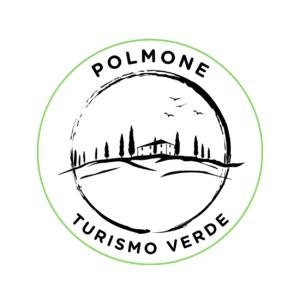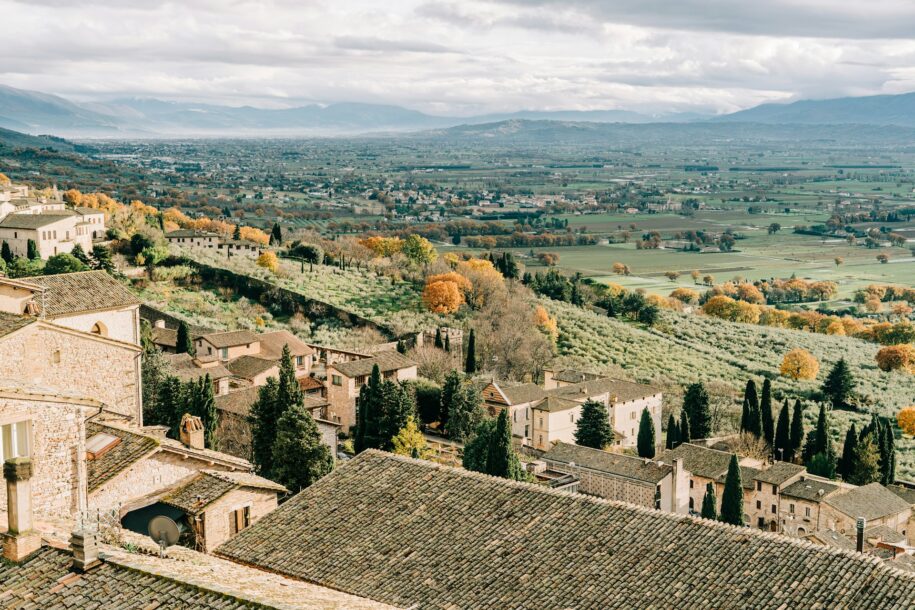Umbria, the green heart of Italy, is a must-visit with its beautiful hills, olive trees and vineyards. It is nice and quiet here, perfect for those who want to escape the hustle and bustle. You will find a mix of Etruscan, Roman and medieval history. Highlights here include searching for truffles, tasting wines, and many hilltop towns and festivals. We have asked Hans of travel blog Reischeck.co.uk to name the nicest places to visit around our holiday apartments.
1. Hunting for truffles
What Umbria is known for are its delicious fresh truffles. In no other region in Italy will you find as many black truffles as here. Truffles are also known as “the black diamonds”. That's because they are very rare and therefore very expensive. The truffle is actually just a fungus that lives underground. Various tours are organized in the area where you can look for these truffles together with a guide. A super fun, special experience where the guide can also tell you everything about the truffles!
2. Tasting wines
Located in the heart of Umbria, Italy, il Castello di Montegiove is known for its exquisite wines and rich history. This 13th century castle, located an impressive 627 meters above sea level, is one of the best preserved buildings in Umbria and has been owned by the Marquis Misciatelli since 1780. The estate, which covers almost 1,200 hectares, is dedicated not only to viticulture but also to the production of high-quality olive oil, the breeding of Chianina cattle and hunting for black truffles, which are most sought after in haute cuisine.
The castle's vineyards cover approximately 13 hectares, on which grape varieties such as Sangiovese, Sagrantino, Montepulciano, and others are carefully grown. This diversity supports the production of quality wines that reflect Umbria's unique landscape. With an average production of 50,000 bottles per year, 75% of which is intended for export, Castello di Montegiove focuses on craftsmanship and quality. The vineyards are located in the DOC Orvieto region, known for its white wines, although most of their production is red. The winery, modernized in 2008, uses barriques and tonneaux of Slavonian and French oak for the maturation of the wines.
Visitors to the castle will have the opportunity to walk through the historic corridors and enjoy a wine tasting where several wines will be presented, each with a unique story and flavor profile that reflects the rich tradition and innovation of Castello di Montegiove. You can also find more information about the winery in this blog.
3. Cascate di Marmore
The Cascate di Marmore, located near Terni in Umbria, Italy, is a spectacular sight that provides a pleasant cooling off , especially during the hot summer days. With a height of 165 meters, this waterfall is not only one of the highest in Italy, but it is also the largest man-made waterfall in the world, built by the Romans in 271 BC. The Roman consul Manius Curtius Dentatus' initiative to divert the Velino River to the Nera River was originally intended to prevent flooding and drain swamps, which were the cause of malaria and other diseases. This inadvertently resulted in the creation of one of Umbria's most impressive tourist attractions.
To accommodate the large flow of visitors, ample parking facilities are available at both the top and bottom of the waterfall. The waterfall can be explored via several numbered trails that allow you to enjoy this impressive natural phenomenon from multiple perspectives. The most recommended path is Hiking Trail Number 1, which follows the course of the waterfall from top to bottom or vice versa. Visitors who start at the upper part will quickly reach the Belvedere Specola Pio VI viewpoint, a spot created in 1781 by order of Pope Pius VI, where one can see the Velino River crashing into the depths with a loud noise, creating a breathtaking cloud of mist .
4. Parco dei Mostri at Bomarzo
The park is also known as the Park of Monsters, because of the monstrous sculptures you'll find here. Quite scary, but also very special! Near the picturesque village of Bomarzo you will find this unique garden, known as the Gardens of Bomarzo or Sacro Bosco. This late Renaissance garden, laid out in the Mannerist style, is home to a fascinating collection of grotesque and eccentric sculptures. Visitors can marvel at statues of an elephant, tortoise, giant, bears, a three-headed statue, sphinxes, siren, Hercules, Neptune, and various monsters and mythological figures. Designed in 1547 by Pirro Ligorio, who completed St. Peter's Basilica in Rome after Michelangelo, and Vignola, this project was an ode by Pier Francesco Orsini to his late wife Giulia Farnese. The sculptures, chiseled from volcanic rock, show the ravages of time but still remain a timeless attraction.
5. La Scarzuola
La Scarzuola offers an intriguing look at an unusual creation in Umbria, designed by Italian architect Tomaso Buzzi. This 'fantasy world' consists of a complex of temples, domes, labyrinths, pyramids, ponds, and towers, each element rich in symbolism and mysticism. Buzzi, who bought the grounds of the monastery founded by Saint Francis in 1956, devoted twenty-five years of his life to shaping his dream world, a 'città Buzziana'. This place, once intended as a personal retreat for Buzzi and some friends, such as Salvador Dalí, was preserved after his death, although against his wishes, by his cousin Marco Solari. Today, La Scarzuola is an enchanting destination that can only be visited by advance reservation, a policy that preserves the exclusivity and mystique of the place.
6. Visit enchanting hilltop towns
Umbria is dotted with charming hilltop towns waiting to be explored. Places like Gubbio, Spoleto, Orvieto, Foligno, Bevagna, Città Della Pieve, Norcia, and Perugia are just a few examples of the treasures this region has to offer. Each town, nestled against picturesque hills, tells its own unique story, rich in history and surrounded by breathtaking nature.
These towns are not only visually pleasing, but also offer a deep dive into Italian culture with their many summer festivals. These events, often with a historical theme, offer an authentic experience that is less influenced by tourism than the famous Palio in Siena. From medieval festivals to cultural parades, visitors can enjoy the vibrant traditions that come back to life every year.
7. Umbria Jazz in Perugia
Every year the Umbria Jazz Festival takes place in Perugia. This festival has been around for over 30 years. You can compare it somewhat with the North Sea Jazz Festival in the Netherlands. But there is an important difference: in Perugia the entire city is dedicated to jazz music for the duration of the festival. If you are on holiday here around this time, it is great fun to visit one of the many open-air concerts. You'll really get to know the city of Perugia in a unique way!
8. Assisi
Assisi is truly a little gem in Umbria and attracts particular attention as the city of the 13th century saints Francis and Clara. Many people come especially for the impressive San Francesco Basilica, but Assisi has much more to offer than just this famous pilgrimage spot.
This atmospheric, warm white town clings to the slopes of the 1,290-meter-high Monte Subasio and treats you to fantastic views: the Spoleto Valley on one side and Perugia, about 15 kilometers away, on the other. The cityscape is marked by the mighty Basilica of Saint Francis and the sturdy Rocca Maggiore castle.
Pilgrims have been walking the ways to Assisi since the 13th century, in search of the heritage of Saint Francis, who breathed his first and last breath here. But you don't have to be a religious person to enjoy Assisi. Surrounded by the Umbrian hills and Monte Subasio, it is a fantastic town to stroll through. With its well-preserved medieval charm and UNESCO World Heritage status, Assisi offers something for everyone. Also a very nice destination for a Fly & Drive holiday to Italy!

